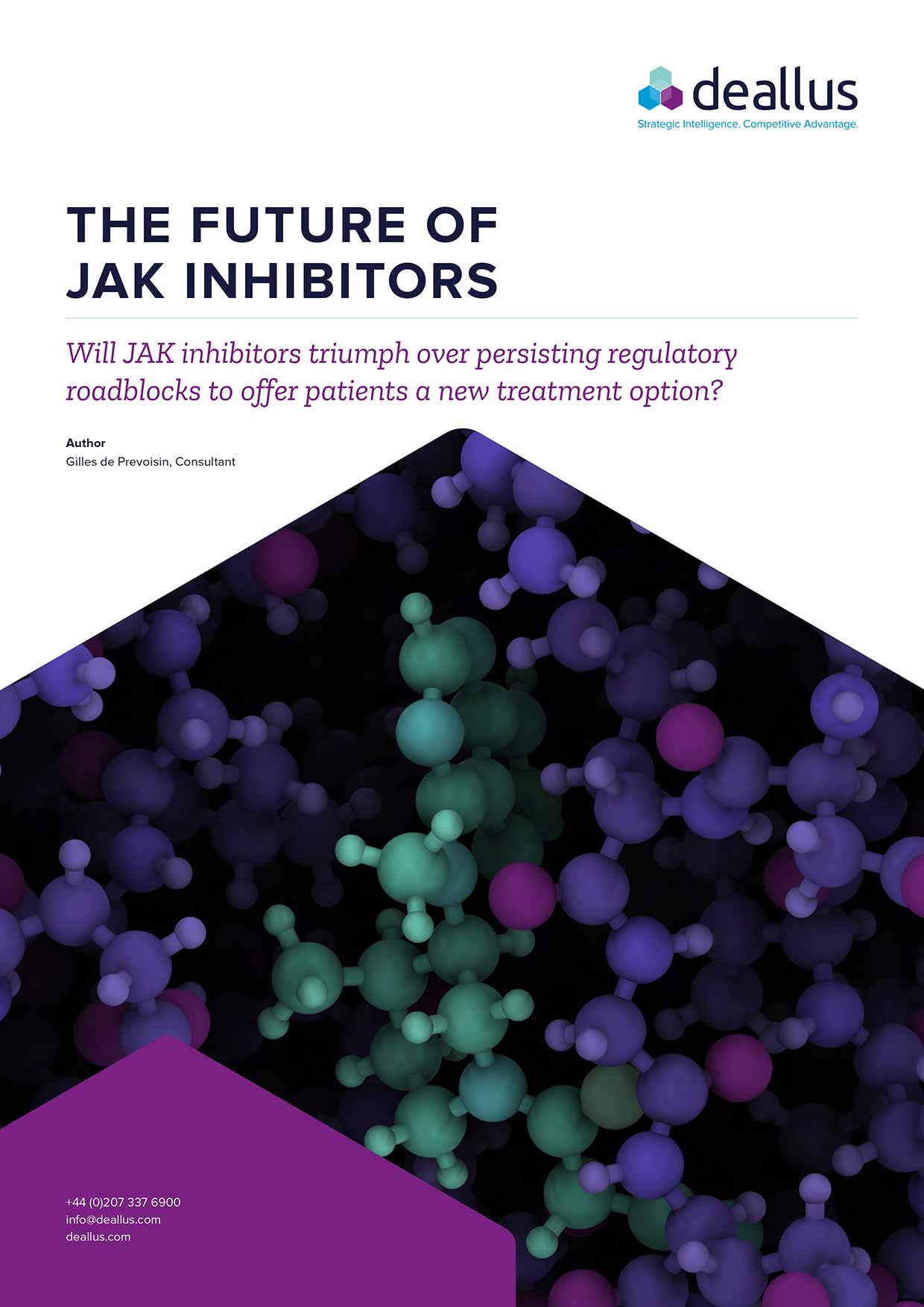The Future of JAK Inhibitors
Will JAK inhibitors triumph over persisting regulatory roadblocks to offer patients a new treatment option?
From blockbuster drugs to black box warnings, Janus kinase inhibitors (JAKs) have seen dramatic highs and lows in their journey to market access across the last few years. This innovative drug class has faced dizzying twists, turns and falls within the landscape of safety acceptability. Yet despite the hurdles JAKs are facing, pharma’s conviction in their potential to generate a paradigm shift in patient care means R&D activity and interest remains undaunted.
Driven by the sheer scale of the Immune-Mediated Inflammatory Diseases (IMIDs) treatment market and clear scenario of unmet patient need, the JAKs pipeline currently comprises no fewer than 45 therapeutic candidates. 1 In different stages of development, they are in a whole slew of IMID fields – and their journey is far from over.
JAK inhibitors are an oral class of therapeutics exciting to biopharma companies, investors, patients and physicians alike. Clinical results promise patients in multiple indications effective and more convenient treatment options. The first assets to enter the market, with approval for Rheumatoid Arthritis (RA), were tofacitinib (now also approved for Psoriatic Arthritis and Ulcerative Colitis) and baricitinib, followed by upadacitinib (RA).
First-generation JAKs have proven spectacularly efficacious both in clinical trials and in the clinic in treating inflammatory and autoimmune diseases – however, nearly all are facing an imbalance between safety and efficacy.
The result? JAKs’ rise in market success – for now – has hit unexpected turbulence.
You may also be interested in…
World Brain Day 2024
Established by the World Federation of Neurology in 2014, World Brain Day seeks to raise public awareness on various neurological health topics each year. This year’s theme, “Brain Health and Prevention”, brings awareness to preventive measures that can alleviate the burden of many neurological conditions for patients across the world.
World Kidney Cancer Day: The future of RCC treatment
World Kidney Cancer Day brings much needed attention to a disease affecting hundreds of thousands of people worldwide.
Revolutionizing Blood Cancer Treatment: A Dive into Cutting-Edge Therapies
World Blood Cancer Day [28 May 2024] serves as a stark reminder of the significant challenges faced by the millions battling these life-threatening diseases. Here at Deallus, we have been privileged enough to partner with many leading companies in this space to support the development of lifechanging therapies across haemato-oncology.
World Day for Cultural Diversity 2024
Feel the driving force of Cultural Diversity as voiced by my global Deallus colleagues. Happy World Day of Cultural Diversity!





